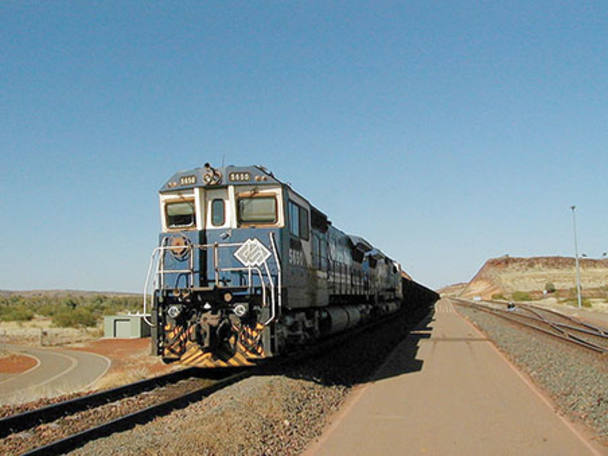It’s been another disappointing six months for Investors Chronicle’s high-yield system which despite generating £4,883 in dividends since April 2016 (just below the new £5,000 threshold before dividend taxation needs to be applied) is down by another 3 per cent overall. Casting an eye over the worst performing stocks in the portfolio, it seems the way the system works as effectively a value investing strategy is behind much of the weakness.
Value stocks achieve capital gains for investors when the price re-rates because the market has previously discounted the underlying assets and/or earning potential of a business. The most commonly used indicator of value is the price to book (PB) ratio, which gives the share price as a multiple of the book value of assets (land, plant, inventory, receivables, cash etc). One of the main rationales for value investing is that often companies have temporarily fallen out of favour and are trading on a low price to book, even though they have now improved their situation. This assumes that those undervalued assets are productive; and some stocks are value traps because companies are not currently capable - thanks to the macro economy, regulatory restrictions or poor management - of generating additional utility. This has been the case for many value stocks over the last few years, as globally weak GDP has meant there hasn’t been demand in the economy for unloved stocks to make full use of their capacity.
The high-yield system has filters (see below for the full rules) but, after these have been applied, FTSE All-Share companies are selected on their dividend yield. If companies that pay a dividend have a lower share price then the yield will be higher which, like a low PB, can indicate value. Given the strange circumstances of quantitative easing and rock bottom bond yields, traditionally safe income stocks are expensive and trading on a low dividend yield, effectively pricing out the high-yield System. The result is that the portfolio has more value stocks – companies which are facing difficulties or are out of favour but have a nominally generous dividend – and in the absence of the economic growth the value factor typically needs to make good, this has meant a general underperformance across the board.
The biggest losers in the portfolio have been hit by a number of idiosyncratic and industry-specific issues that have dragged on share prices. For example Go Ahead Group's (GOG) 25 per cent loss since April could be put down to the woes of Southern Rail (although the company’s impressive numbers overall mean it is on an IC Buy tip and is arguably more a growth than a value stock). Sainsbury's (SBRY) is down by almost 20 per cent but, compared to peers, our writers rate its chances of overcoming the challenges posed by discounters and now Amazon's entry into grocery retail. Support services and construction project company Carillion (CLLN) is also seen as a decent long-term prospect by Investors Chronicle writers, in spite of share price weakness this year.
As for the better performers, there was a significant bounce for miner BHP Billiton (BLT) with its price up 62 per cent and also for oil services engineer Amec Foster Wheeler (AMFW), up 37 per cent. These are both stocks that were hammered by weak commodity prices for the first year of the high-yield portfolio’s existence. Higher prices since the second quarter of 2016 have prompted a re-rating but as both companies have cut dividends, it is clear returns are from value rather than income factors.
Thanks to the high-yield rules of only rebalancing shares with positive momentum, BLT and AMFW were proportionately smaller holdings after the previous review in April. In powerful legs of the commodities bear markets this decision on rebalancing helped limit wider damage for the portfolio but, allowing positions to become relatively smaller, has meant that recovery gains make less of an impact. Regardless of price performance, as both BLT and AMFW have cut their dividend, under the system's rules both companies must now be sold.
Does a passive approach deliver?
Along with BLT and AMFW, two other stocks to fall by the wayside as far as our rules based system is concerned are Kier Group (KIE) and Greene King (GNK). Both companies have dividend yields below the portfolio average and combine this with negative 12 month price momentum. With Kier, the case for selling is not especially strong and in his latest update for Investors Chronicle, Jonas Crosland was impressed that the company was taking a more integrated approach following its Mouchel acquisition. Greene King is a fairly unremarkable pub group but, as we discuss below, it is questionable whether the stocks we are replacing these holdings with are an improvement. The problem with a rules-based system is that buy and sell decisions are arbitrary and fickle – had we run the screen on another day Kier’s 12-mth share price change might be in positive territory – so sometimes following rules to the letter results in trades that don’t instinctively make sense.
The reason for adopting a passive approach is to remove the emotion from buy and sell decisions. However, when selecting just 15 companies we are not achieving the diversification which is one of the main benefits of passive strategies when these encompass a whole index. Choosing such a narrow slice of the universe of stocks is an emotional leap of faith in itself. Therefore, why not use the high-yield screen as just the starting point and then actively manage the decision of which companies to buy and sell? This would certainly save on dealing costs and avoid replacing shares we would be happy to hold on to.
Going forward the high-yield System will be maintained in its current passive form but alongside it, we will run an active portfolio based on the screens suggestive signals. The passive portfolio will provide an ideal benchmark for the actively managed holdings.
High-yield system passive portfolio additions
Three new stocks and one investment trust come into the portfolio. The IT is 3i Infrastructure (3IN) and the other three companies are Saga (SAGA), Big Yellow Group (BYG) and Petrofac (PFC). The investment case for infrastructure is that, as well as the dividend, it provides a source of stable and defensive returns that aren’t correlated to equities. As in the case of 3IN, this income and protection is often priced at a premium with the current market valuation of the investment trust shares nearly 13 per cent above net asset value (NAV) of the fund. Given current uncertainties for the UK economy, however, this may be a defensive premium worth paying.
Of the three individual company shares, oil services company Petrofac is a classic value play. On a speculative Buy tip, our oil & gas reporter Alex Newman cited the company as now looking forward to enterprises promising lump-sum earnings in the Middle East, having ended its loss-making project in the North Sea. As with many companies in the sector, however, the debt position is a concern for income investors and the hope is the dividend doesn’t come under pressure further down the line.
Rules-based investing: How the high-yield System has fared over the past six months
| Holding | TR 11/04/2016 to 10/10/2016 (%) | Percentage of portfolio at 10/10/2016 | Price 10/10/2016 GBX | Dividend yield (10/10/2016) | Percentage of Portfolio after rebalance | Last IC View |
| Royal Mail (RMG) | 5.2 | 8.40 | 486.2 | 4.71 | 6.97 | Hold 25/05/16 |
| HICL Infrastructure (HICL) | 8.06 | 8.70 | 171.2 | 4.38 | 6.97 | N/a |
| Go Ahead Group (GOG) | -25.12 | 6.17 | 1967 | 4.87 | 5.99 | Buy 14/10/16 |
| Imperial Brands (IMB) | 2.08 | 8.31 | 3855 | 3.77 | 6.98 | Buy 03/11/15 |
| Man Group (EMG) | -19.66 | 5.38 | 113.7 | 6.01 | 5.22 | Sell 27/07/16 |
| Legal & General (LGEN) | -0.93 | 7.05 | 218.1 | 6.4 | 6.83 | Buy 10/08/16 |
| Amec Foster Wheeler (AMFW) | 41.36 | 3.81 | 619.5 | 3.49 | SOLD | Buy 09/08/16 |
| BHP Billiton (BLT) | 64.57 | 4.70 | 1267 | 1.36 | SOLD | Hold 16/08/16 |
| Londonmetric Property (LMP) | -5.54 | 7.91 | 151 | 4.87 | 7.67 | Buy 01/06/16 |
| Galliford Try (GFRD) | 0.23 | 6.63 | 1300 | 6.31 | 6.43 | Buy 14/09/16 |
| Carillion (CLLN) | -8.56 | 5.75 | 248 | 7.4 | 5.58 | Buy 24/08/16 |
| Kier Group (KIE) | 10.39 | 6.57 | 1336 | 4.83 | SOLD | Buy 22/09/16 |
| Sainsbury (SBRY) | -17.05 | 6.54 | 233.8 | 5.18 | 6.34 | Buy 28/09/16 |
| Intermediate Capital (ICP) | 2.25 | 7.18 | 604 | 4.8 | 6.97 | Buy 24/05/16 |
| Greene King (GNK) | -12.65 | 6.89 | 741 | 4.33 | SOLD | Buy 29/06/16 |
| Portfolio 6-mth TR (%) | -3.08 | |||||
| New selections | ||||||
| Saga (SAGA) | 8.6 | 205.9 | 4.68 | 6.97 | Hold 21/09/16 | |
| 3i Infrastructure (3IN) | 11.23 | 189 | 3.84 | 6.98 | N/a | |
| Big Yellow Group (BYG) | -5.58 | 718 | 4.25 | 6.96 | Hold 25/05/16 | |
| Petrofac (PFC) | 15.85 | 952.5 | 5.27 | 6.96 | Buy 29/09/16 | |
| Cash | 0.2 |
What active decisions to take?
Taking the portfolio at the rebalance date, which of the changes suggested by the screen would be kept in an active management of the portfolio? Looking first at the sells, it seems logical that if the purpose of the portfolio is income, then we should exit positions in BLT and AMFW where the dividend has been cut (although if the focus was on value investing and we had a long time horizon, these holdings would be worth keeping). As there is still a decent investment case for Kier (and its yield only narrowly fell below the portfolio average) there seems little point in selling. With GNK too, there is not an overwhelming reason to sell, so the stock stays in the portfolio.
This means that for the active portfolio, we are only looking for two new companies. The two highest yielding stocks from the screen re-run in October are Petrofac (5.27 per cent) and Big Yellow Group (4.25 per cent). Of the companies added to the passive portfolio, these are actually the two that the Investors Chronicle were most positive about when last covered, so we are happy to add them in place of the two sells.
From 10/10/2016 we run this active portfolio, which takes suggestions from the HYS, alongside the rules-based portfolio
| Holding | Price (GBX) 10/10/2016 | Dividend Yield 10/10/2016 | % of total portfolio | Last IC View |
| Royal Mail (RMG) | 486.2 | 4.71 | 6.98 | Hold 25/5/16 |
| HICL Infrastructure (HICL) | 171.2 | 4.38 | 7.14 | na |
| Go-Ahead Group (GOG) | 1967 | 4.87 | 5.96 | Buy 14/10/16 |
| Imperial Brands (IMB) | 3855 | 3.77 | 6.88 | Buy 03/11/15 |
| Man Group (EMG) | 113.7 | 6.01 | 5.20 | Sell 27/07/16 |
| Legal & General (LGEN) | 218.1 | 6.4 | 6.81 | Buy 10/08/16 |
| Londonmetric Property (LMP) | 151 | 4.87 | 7.64 | Buy 01/06/16 |
| Galliford Try (GFRD) | 1300 | 6.31 | 6.41 | Buy 14/09/16 |
| Carillion (CLLN) | 248 | 7.4 | 5.56 | Buy 24/08/16 |
| Kier Group (KIE) | 1336 | 4.83 | 6.35 | Buy 22/09/16 |
| Sainsbury (SBRY) | 233.8 | 5.18 | 6.32 | Buy 28/09/16 |
| Intermediate Capital (ICP) | 604 | 4.8 | 7.81 | Buy 24/05/16 |
| Greene King (GNK) | 741 | 4.33 | 6.66 | Buy 29/06/16 |
| Big Yellow Group (BYG) | 718 | 4.25 | 7.13 | Hold 25/05/16 |
| Petrofac (PFC) | 952.5 | 5.27 | 7.10 | Buy 29/09/16 |
| Cash | 0.05 |
Of course, with active management there are qualitative and emotional judgements which could well turn out to produce inferior performance to the passive portfolio. However, not just the results of the high-yield System but also its composition – of value rather than income stocks – brings into question its efficacy as a passive strategy for yield. For accessing income factor returns, a better approach would be to buy an income tilted exchange traded fund (ETF), where investors can gain exposure to the performance of a broader selection of income stocks and where criteria such as the dividend growth rate and cash cover provide additional quality filters.
Value investing strategies in general have disappointed in recent years. In an expensive market, the high-yield System is effectively a value screen that selects according to dividend yield – so the poor performance should not really be surprising. That said, if there were to be a reversal in the pattern of (already heavily bought) quality growth and income stocks outperforming. It is possible that some of the better value dividend payers selected here could do well, relative to the market.
Table: The high-yield system works as a value screen and has underperformed the market and other passive income strategies.
| Index/Fund | 6-mth Total return 11/04/16 to 10/10/16 (%) |
| High-yield system | -3.08 |
| FTSE 350 | 15.42 |
| FTSE All Share | 15.32 |
| SPDR UK Dividend Aristocrats ETF (UKDV) | 10.40 |
High-yield system rules
Stocks are selected from the FTSE All-Share having applied the following screening criteria:
■ Positive 12-month price momentum.
■ Market capitalisation in the top 40 per cent of the universe.
■ Dividend yield not in the top 10 per cent of the universe (this is a quality measure).
■ Dividend cover above 1.5.
■ Remaining shares ranked on dividend yield.
■ Companies sold if they combine negative 12-month price momentum with a dividend yield below the portfolio average; or, if the dividend is passed.
Diversification rules:
■ No new addition can increase the number of companies in one sector above two; and there can be no more than five companies in the broad financial sector (banks, financial services, life insurers).
Rebalancing rules:
■ Portfolio rebalanced every six months.
■ 'Winners only' rebalancing of shares with positive price momentum since the last review.
■ Only rebalance shares where a minimum 5 per cent holding change is required.









